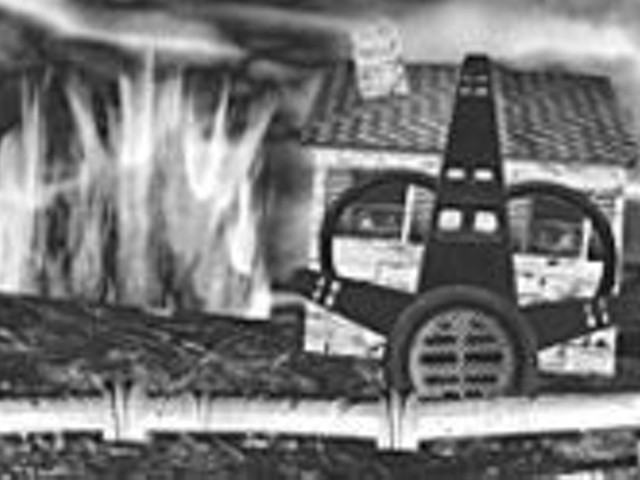There's one problem, however, with this article of faith: It isn't true.
The good news -- albeit the largely unreported good news -- is that fewer than 4,000 innocents lost their lives in New York, and the death toll may actually turn out to be closer to 3,000, counting the 157 victims on the two hijacked airliners. Even including the 233 people killed in Pennsylvania and Washington, D.C. (a total that has remained constant), the overall official death toll stood at 4,184 on Monday.
And it's dropping almost every day.
In the largest sense, no adjustment to the statistics will change the fact that the Sept. 11 death toll was, as New York Mayor Rudolph Giuliani put it aptly, "more than most of us can bear." Neither the evil of the attack nor the suffering of the victims and their families is diminished at all by a reduction in the numbers.
But if more than 5,000 people were not killed on Sept. 11, as initially believed and reported, shouldn't people stop saying it is so? Does it somehow minimize the tragedy to describe it accurately?
Instead of noting with a sense of relief that the losses were of a slightly smaller magnitude than first feared, the media and political world have chosen to ignore updated figures, though they come from the same official sources that created the 5,000 standard. It's as if there's a fear of insulting the memory of more than 1,000 victims who in reality don't exist.
There seems to be a collective unwillingness, especially in the print media, to set the record straight. This meets the definition of propaganda, and, as such, it is not a small detail of the Sept. 11 story.
Understand that the business of determining the death toll has itself been a grisly and tragic task for officials in New York. In addition to the physical challenges of identifying human remains, there was initially a torrent of confusion as information poured in from thousands of families, companies and agencies.
In the early hours and days of the tragedy, many people who normally would have been at the World Trade Center complex (but fortunately were not) were reported missing. Then there was the problem of duplication, often caused by slightly different spellings of names reported to police by multiple sources.
That's why, despite the best of intentions, the missing-persons numbers fluctuated wildly in September, starting with a figure of 4,763 from the mayor's office and rising as high as 6,453 within two weeks of the attack. Over the past two months, the official police count has steadily declined as the painstaking process of determining accurate information has unfolded.
Every business day, the Associated Press sends out an "official count of victims in terrorist attacks," and as recently as this past Monday, the World Trade Center numbers -- provided by the police -- continue to come down. A milestone of sorts was reached Monday when the total dropped below 4,000 -- to 3,951 for the first time.
In the past week alone, the official number feared dead has dropped by 238, or nearly 6 percent. A recap of recent official counts, as reported by AP, shows how fluid the accounting continues to be:
|
Date
Oct. 1 Nov. 1 Nov. 3 Nov. 5 Nov. 6 Nov. 8 Nov. 9 Nov. 13 Nov. 14 Nov. 16 Nov. 19 |
|
Total
5,563 4,418 4,396 4,358 4,346 4,326 4,304 4,189 4,143 4,100 3,951 |
|
Missing
5,219 3,923 3,897 3,835 3,822 3,770 3,748 3,633 3,554 3,506 3,357 |
|
Identified Bodies
344 495 499 523 524 556 556 556 589 594 594 |
Obviously this is what the media likes to call a "developing story," which is all the more reason for its developments to be covered. Yet the AP's daily reports go largely unnoticed, as does the news service's own body count, which stood at 3,001 on Monday for New York, Pennsylvania and Washington, D.C., combined.
Meanwhile, though some electronic outlets report the changing totals, the vast majority of politicians and journalists continue referencing the "more than 5,000 deaths" without contradiction. It does not appear that any amount of factual information will effect a change in their mantra.
In and of itself, the overstatement of Sept. 11 deaths does no particular harm, no more than saying that the tragedy has touched 400 million Americans in all 65 states. But in addition to being factually inaccurate, the continued use of the 5,000-death total suggests a willingness to ignore new information that doesn't "fit the story."
There's a palpable sense that the American public has become a raging bull and that no one dares say anything that doesn't please it. If that's the case, it's a truly ironic consequence of the new nationalism that the country cannot stand to learn that its death toll was overstated.
Now more than ever, healthy skepticism matters.
So maybe someone, at some Thanksgiving Day dinner this week, will give thanks that the Sept. 11 death toll is just a little bit lower than we thought.





